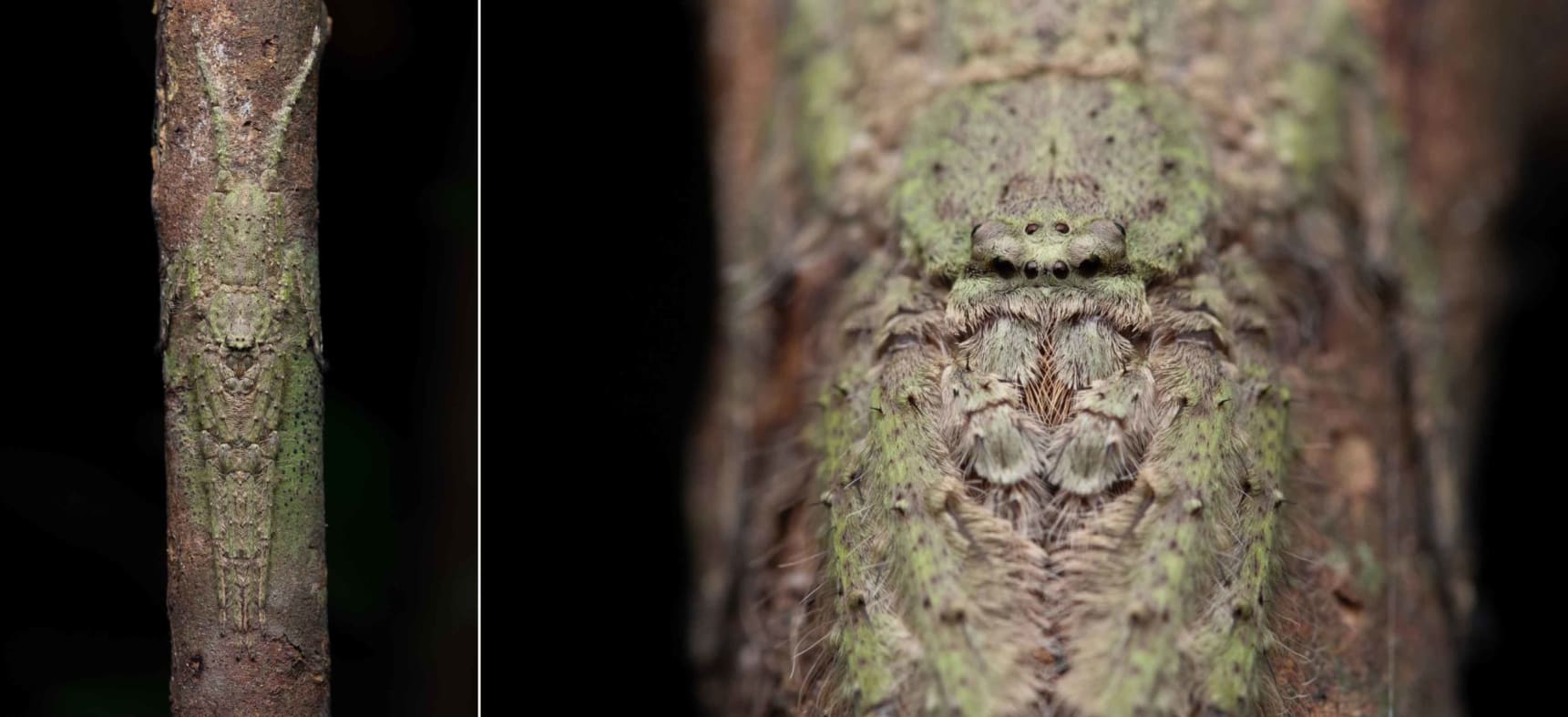 Listen to this article
•
15:34 min
Listen to this article
•
15:34 min
The World Spider Catalog currently lists close to 50,000 species of spiders found around the world. It’s a number that steadily rises each year. This makes it particularly difficult for people interested in spiders to sound like they know what they are talking about. When a well-meaning acquaintance or family member presents a blurry picture taken on a phone and asks me to name the spider, my thoughts stray as far as “Kiran seems like a fitting name for this spider”. To accurately identify a spider down to the species level, one would need a microscope and a thorough understanding of spider taxonomy. Identifying spiders to the level of a taxonomical family maybe easier and sufficient for hobbyists, educators, and some areas of environmental research. Nearly all spiders placed within a family are consistent in a number of ways —their eye arrangements and overall body structures look the same, and most species within the family employ similar predatory strategies.
Cover photo: Tiny juvenile lichen hunstman spiderlings emerge after hatching. Cover photo: Jithesh Pai
For instance, all spiders in the Salticidae family (jumping spiders) have two large characteristic frontal eyes that give them excellent eyesight and a striking resemblance to a puppy asking for treats. All species in this family are also built similarly with a stalky frame and powerful legs that allow them to jump at prey. As might be evident from their name, this is how most jumping spiders hunt —they actively search microhabitats for prey and lunge at them with hungry prowess. There is, however, a genus in this Salticidae family that presents a curious exception to the active predatory lifestyles of the rest. Jumping spiders in the genus Phaeacius are ambush predators that sit camouflaged seamlessly on the barks of trees, waiting for unsuspecting prey to come close enough.
When you first see a Phaeacius spider sitting on a tree trunk, you may stop and wonder how many times you passed by without noticing it. This was the case with a Phaeacius outside our home on Havelock Island. A remarkably inconspicuous female Phaeacius had made her home on an areca palm right beside our cottage. The colours and textures on her body blended seamlessly with the bark beneath her. The spider’s cryptic posture and incredible stillness made her camouflage even more impeccable. She sat hugging the tree with an airtight embrace that was betrayed only slightly by large black eyes that seemed to peer from the palm’s trunk. Though difficult to find (well-camouflaged and about the size of an adult thumbnail), she was an easy neighbour to visit repeatedly. She sat in the exact same spot for over a month! We watched her slowly build a small (equally well-camouflaged) silken nest in which she deposited her eggs. She sat on the nest and diligently protected it from unwanted visitors. I would regularly see her pounce on and eat small ants that ventured onto the egg sac. This mother-to-be briefly left her post if a potential meal ventured within 10-15 cm of her seat. On one occasion, we watched as she quietly chomped down a passing weaver ant-mimicking spider (Myrmarachne plataleoides). Having left the island before her brood hatched, I can only hope the little ones are all in good health and playing tricks on the eyes of any unwarranted onlookers.

Like the jumping spider, another spider family popular for its active hunting lifestyle is the Sparrasidae family (Common name: huntsman). All spiders in this family have a signature eye arrangement that consists of eight eyes arranged in two seemingly parallel rows of four. A curious exception to the eye pattern in this family is Sinopoda scurion, a cave-dwelling species of huntsman that has no eyes! Hunstman spiders are athletically built, have long legs and are well-known for their blistering speed as they chase down prey or run from annoying bathroom-goers. Their fast-paced mode of attack is perhaps the reason for their common name. As with jumping spiders, there is an exception; a genus in the huntsman family that does not seem keen on moving more than absolutely necessary. Like Phaeacius, huntsman spiders in the genus Pandercetes are ambush predators that sit camouflaged on the barks of trees, waiting to pounce on prey.
Spiders in the Pandercetes genus have textures and colours that not only resemble the bark of the tree they inhabit but the colours of vegetation (lichen and moss) that typically grow on the trunk’s surface. These incredibly complex colour schemes earn them their common name, lichen huntsman. How easy are they to miss? Jithesh Pai, a spider enthusiast and accomplished nature photographer, spent nearly six hours just a few feet away from a lichen huntsman without realising its presence. Jithesh was taking pictures of the tiny wonders that share his enviably green backyard in Sanoor, Karnataka. After nearly six hours of picture-taking, dusk had settled, and a torch that chanced upon a tree trunk right next to him revealed the unmistakable shimmer of eyeshine. Some serious squinting and gasping later, he managed to get within comfortable distance of the spider to take pictures of this practically invisible creature. The eyeshine that gave away the spider’s position results from its tapetum lucidum, a reflective membrane behind its eyes. The membrane reflects light that passes through the eye back into the eye for an extra round of photon absorption—a nifty adaptation to see better in low-light situations. This is something lichen huntsman spiders have in common with the rest of the huntsman family. In spite of their quirky sedentary lifestyle, the lichen huntsman has held on to another trait common among the huntsman family —speed. When these spiders come out of their cryptic positions to hunt prey or scuttle away from intruders, they do so at great speeds. Blink, and you will miss them!









